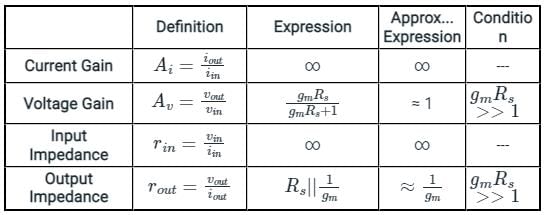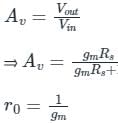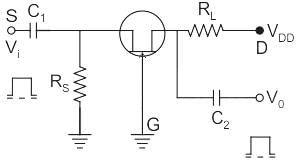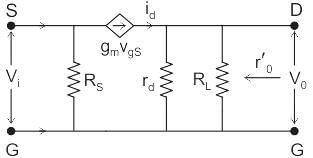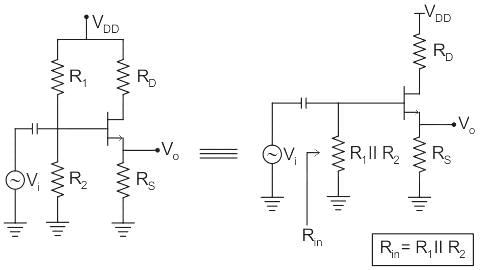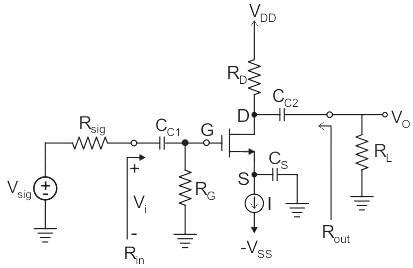Electrical Engineering (EE) Exam > Electrical Engineering (EE) Tests > Test: FET Amplifier - 2 - Electrical Engineering (EE) MCQ
Test: FET Amplifier - 2 - Electrical Engineering (EE) MCQ
Test Description
15 Questions MCQ Test - Test: FET Amplifier - 2
Test: FET Amplifier - 2 for Electrical Engineering (EE) 2025 is part of Electrical Engineering (EE) preparation. The Test: FET Amplifier - 2 questions and answers have been prepared
according to the Electrical Engineering (EE) exam syllabus.The Test: FET Amplifier - 2 MCQs are made for Electrical Engineering (EE) 2025 Exam.
Find important definitions, questions, notes, meanings, examples, exercises, MCQs and online tests for Test: FET Amplifier - 2 below.
Solutions of Test: FET Amplifier - 2 questions in English are available as part of our course for Electrical Engineering (EE) & Test: FET Amplifier - 2 solutions in
Hindi for Electrical Engineering (EE) course.
Download more important topics, notes, lectures and mock test series for Electrical Engineering (EE) Exam by signing up for free. Attempt Test: FET Amplifier - 2 | 15 questions in 45 minutes | Mock test for Electrical Engineering (EE) preparation | Free important questions MCQ to study for Electrical Engineering (EE) Exam | Download free PDF with solutions
Detailed Solution for Test: FET Amplifier - 2 - Question 1
Detailed Solution for Test: FET Amplifier - 2 - Question 2
Detailed Solution for Test: FET Amplifier - 2 - Question 3
Detailed Solution for Test: FET Amplifier - 2 - Question 4
Test: FET Amplifier - 2 - Question 5
The output resistance of FET when operating in pinch off at a current 10 mA and λ = 0.05 V-1 is given as
Detailed Solution for Test: FET Amplifier - 2 - Question 5
Detailed Solution for Test: FET Amplifier - 2 - Question 6
Test: FET Amplifier - 2 - Question 7
Thermal runaway is not possible in FET because as the temperature increases
Detailed Solution for Test: FET Amplifier - 2 - Question 7
Test: FET Amplifier - 2 - Question 8
The voltage gain of a common-source JFET amplifier depends up on its
Detailed Solution for Test: FET Amplifier - 2 - Question 8
Test: FET Amplifier - 2 - Question 9
Compared to bipolar transistors, field effect transistors are NOT normally characterized by:
Detailed Solution for Test: FET Amplifier - 2 - Question 9
Test: FET Amplifier - 2 - Question 10
The most commonly used feedback arrangement in cascaded amplifier is:
Detailed Solution for Test: FET Amplifier - 2 - Question 10
Test: FET Amplifier - 2 - Question 11
In a Common Drain (CD) MOSFET amplifier with voltage divider bias with R1 and R2 equal to 1.5 MΩ and 1 MΩ respectively, the input impedance Zf is:
Detailed Solution for Test: FET Amplifier - 2 - Question 11
Test: FET Amplifier - 2 - Question 12
When a 1 V increase in the gate voltage changes the drain current 10 mA in a FET, its gm equals.
Detailed Solution for Test: FET Amplifier - 2 - Question 12
Detailed Solution for Test: FET Amplifier - 2 - Question 13
Detailed Solution for Test: FET Amplifier - 2 - Question 14
Detailed Solution for Test: FET Amplifier - 2 - Question 15
Information about Test: FET Amplifier - 2 Page
In this test you can find the Exam questions for Test: FET Amplifier - 2 solved & explained in the simplest way possible.
Besides giving Questions and answers for Test: FET Amplifier - 2, EduRev gives you an ample number of Online tests for practice
Download as PDF



